Highlights and access methods of Yakushiji Temple (Nara Prefecture)
English | Japanese
Yakushiji is a temple located in Nara City, Nara Prefecture, and is the head temple of the Hosso sect. Within the temple grounds, there are two three-story pagodas, one of which, the Toto, is an extremely valuable historical structure that has remained since the temple's founding. Additionally, the National Treasure of the Yakushi Triad enshrined in the Kondo is said to be one of the finest masterpieces among Buddha statues from the Hakuho period.
In this article, we will explain the attractions of Yakushiji Temple in Nara Prefecture and how to access it for those who are traveling to Japan from overseas.
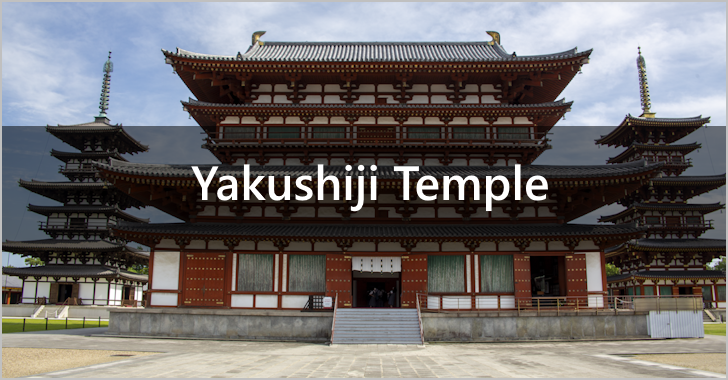
(Last modified: )
(Prefecture : Nara , Category : Temples)
Table of contents
Highlights of Yakushiji Temple
We will introduce the highlights of Kasuga Taisha Shrine.
Minamimon and Chumon
At the southern end of Yakushiji's Hakuho Garan complex is the Minamimon(South Gate). Just beyond this Minamimon is the Chumon(Middle Gate), which is the largest gate within Yakushiji. It was destroyed by fire in 1528 and was rebuilt in 1984.
In 1991, the statues of the Nitennou statues were also restored and are now placed on the east and west sides of the Chumon. A distinctive feature of these Nitennou statues is that they have been restored in vibrant, fully-armed forms.
Minamimon:
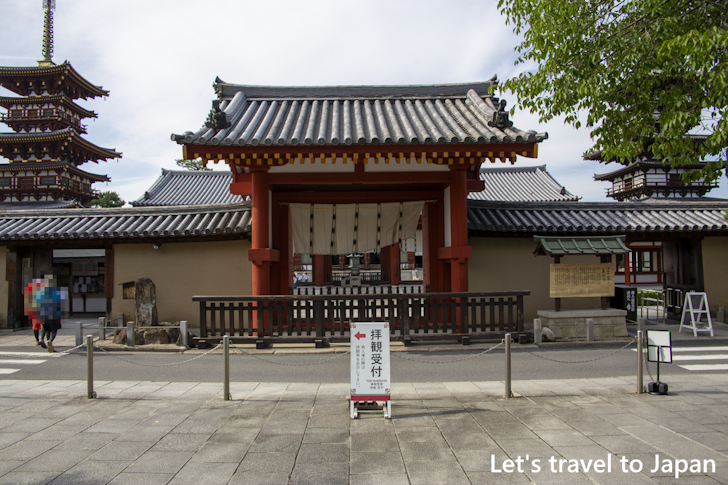
Chumon:
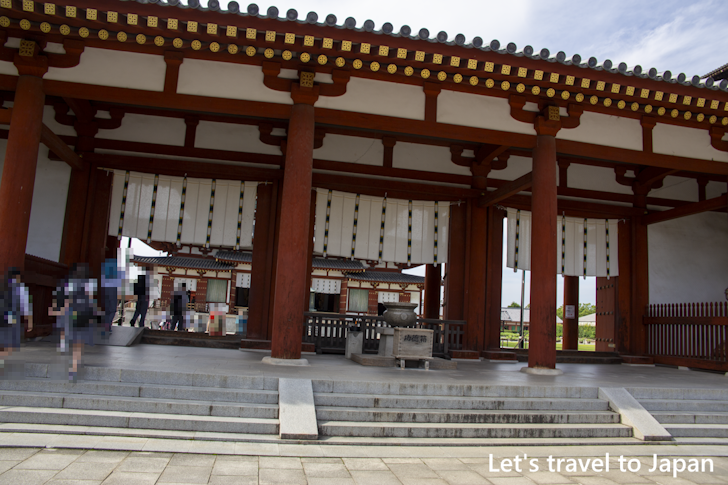
Nitennou statues:
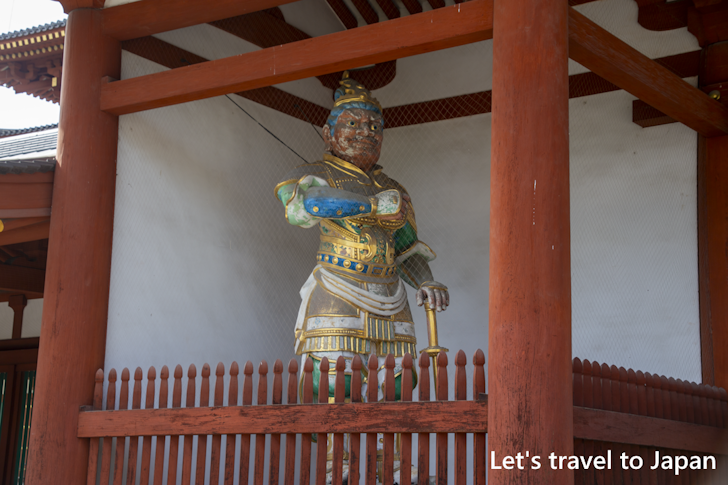
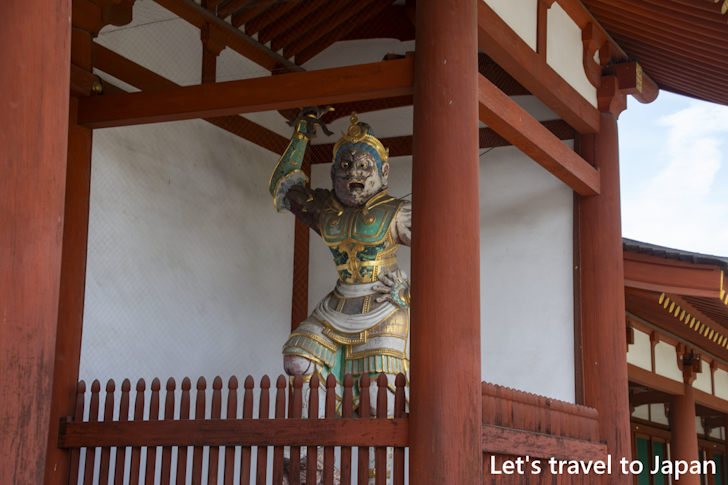
Toto
The Toutou(East Pagoda) is estimated to have been built in 730 and is the only structure remaining from the original construction of Yakushiji Temple. It is designated as a National Treasure. At first glance, it appears to have six layers of roofs, but in reality, it is a three-story pagoda. The smaller roofs are actually what are called "Mokoshi," decorative eaves that give it the appearance of additional stories.
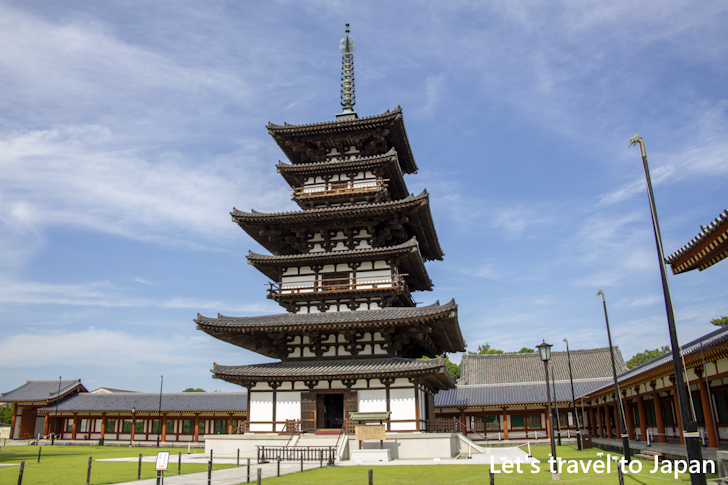
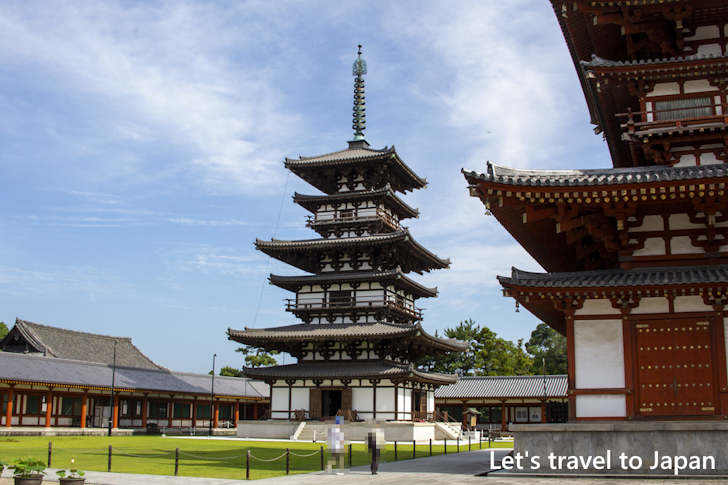
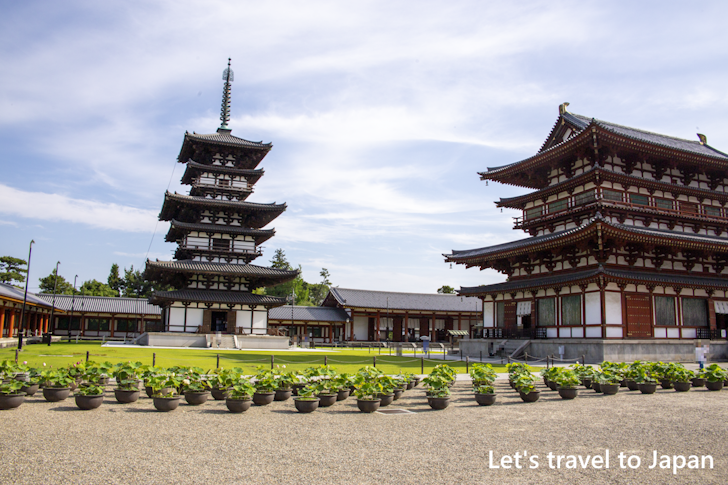
Saito
The exact time of construction for the Saitou(West Pagoda) is not known, but it was rebuilt in 1981 after being destroyed by fire in 1528. The presence of both the East and West Pagodas side by side marks the first time in 453 years that they have stood together. While the Toto has taken on a subdued color over the years, the Saitou is painted in the same vibrant vermillion as when it was first built.
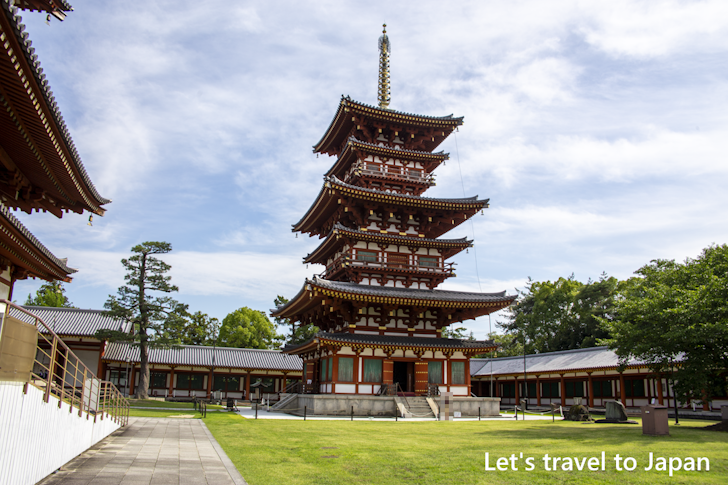
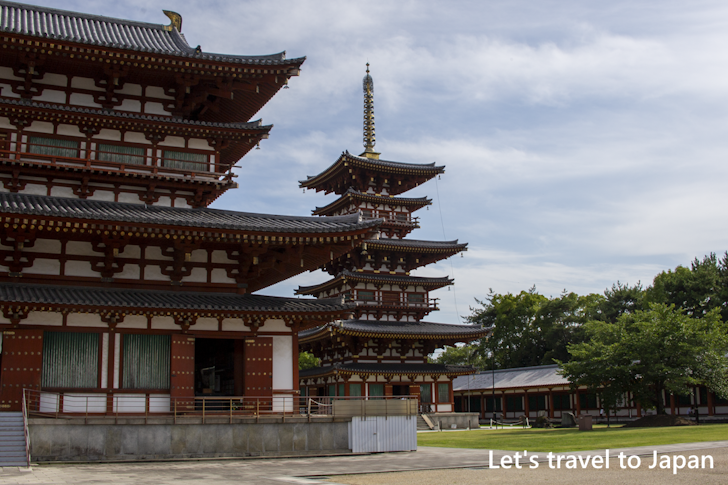
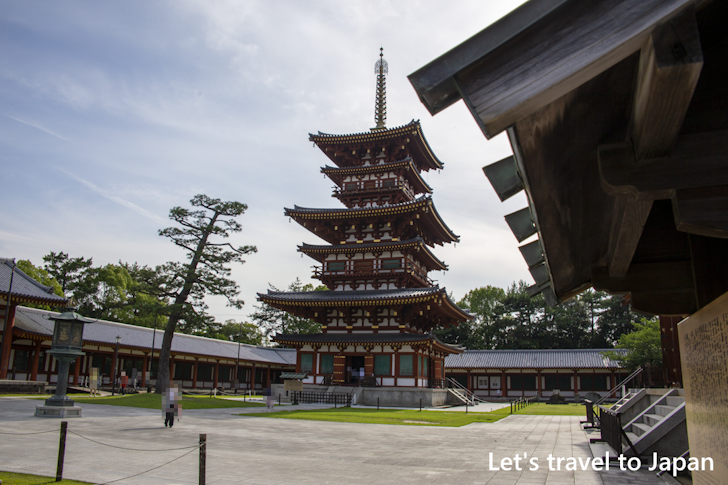
Kondo
The Kondo(Main Hall) was rebuilt in 1976, after being destroyed by fire along with many other structures in 1528. Housed within the Kondo is the National Treasure of the Yakushi Triad. At the center is the statue of Yakushi Nyorai (the Medicine Buddha), flanked by statues of the Nikkou Bosatsu(Sunlight Bodhisattva) and the Gakkou Bosatsu(Moonlight Bodhisattva).
The Yakushi Triad was created during the Hakuho period, although some theories suggest it may have been during the Tenpyo period. Although the Kondo in which they were housed was lost to a fire, the Yakushi Triad itself survived, suffering only the loss of its Kohai. The statues remain in their original form to this day. The Yakushi Triad is considered one of the greatest masterpieces of Buddhist sculpture from the Hakuho period.
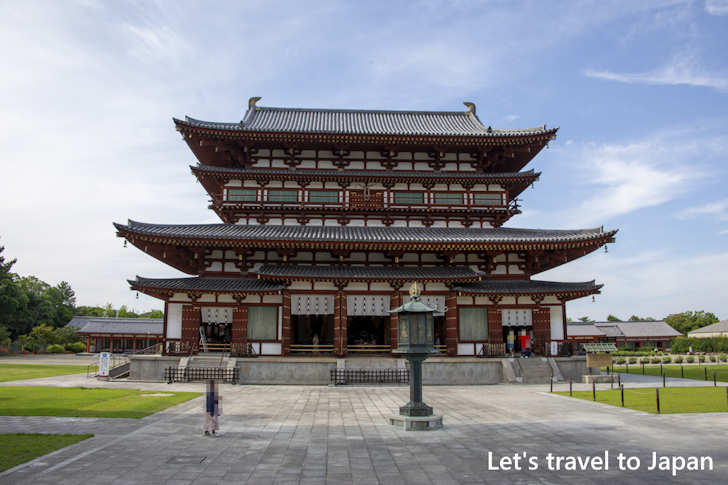
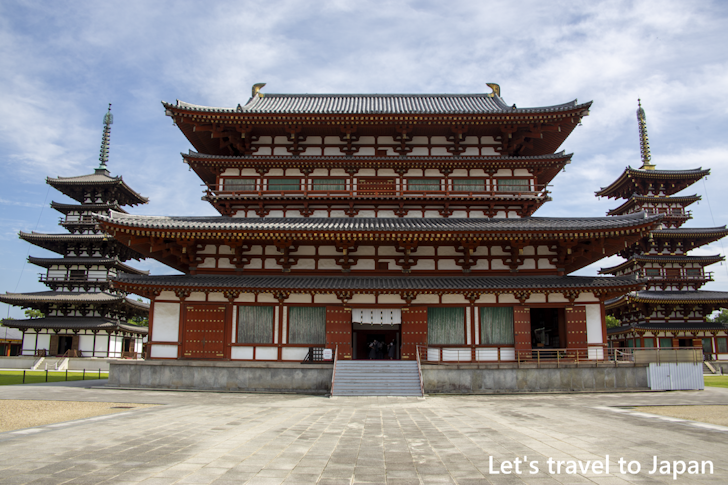
Daikodo
The Daikodo(Great Lecture Hall) is an extremely large structure. It was destroyed by fire in 1528 and was initially rebuilt on a smaller scale in 1852. However, it was reconstructed once again to its original size in 2003. A lecture hall is a place where monks study Buddhist teachings.
Inside the Daikodo, there is a stone featuring carved footprints of Buddha, known as a "Busokuseki". Created in 753, it is the oldest such stone in Japan. Additionally, a stone monument engraved with 21 hymns dedicated to the Busokuseki, known as the "Busokuseki Kahi", is also enshrined there. Both are designated as National Treasures.
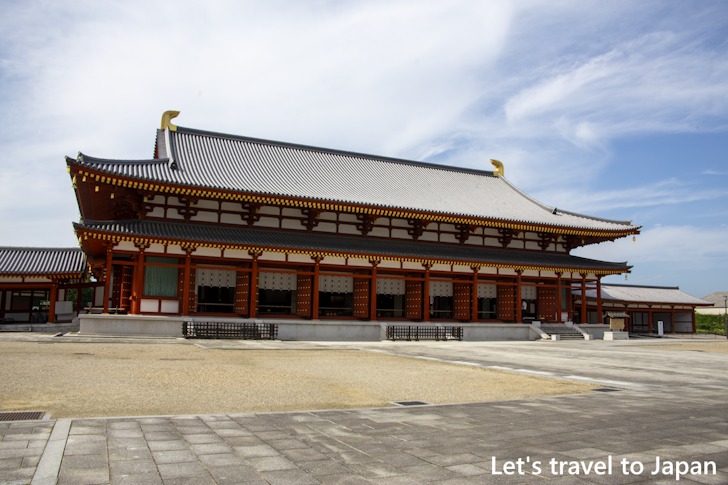
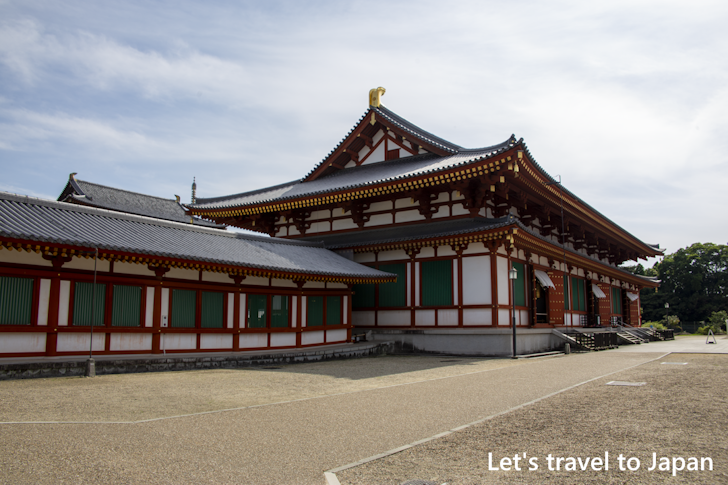
Genjo Sanzoin Complex
The Genjo Sanzoin Complex is a new temple complex built in 1991 to enshrine a relic of the skull of Genjo Sanzo, the founder of the Hosso sect of Buddhism. It is located a short distance away from the Hakuhou Garan. Genjo Sanzo is the historical figure who served as the model for the character of Tripitaka in the "Saiyuki".
In the Genjo Sanzoin Complex, Genjo-tou, located at the center of the corridor, houses the cranial relic of Genjo Sanzo. Additionally, on the north side of the Genjo-tou is a hall dedicated to the "Daito Saiiki Hekiga(Wall Painting of the Great Tang Records of the Western Regions)", which were donated by the artist Hirayama Ikuo. (Photography is not allowed inside the corridor.)
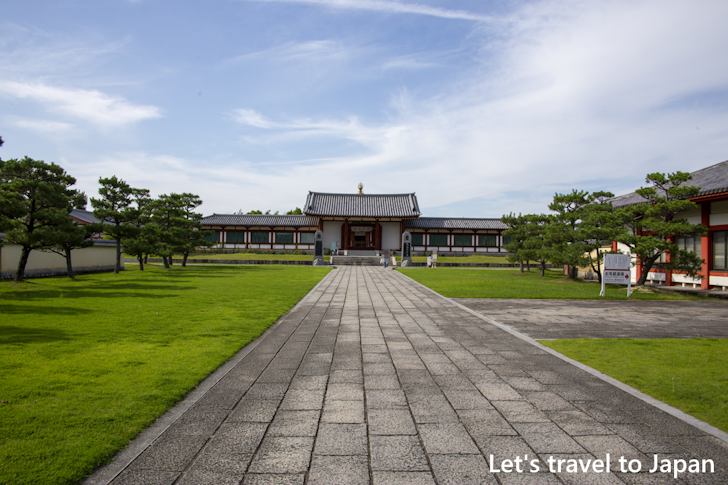
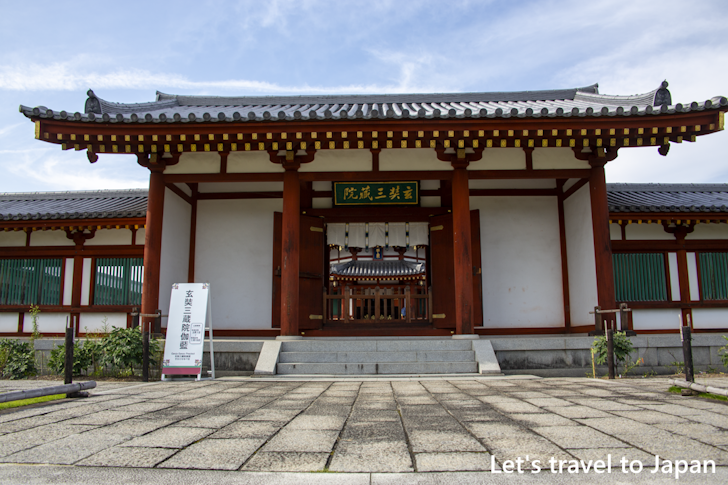
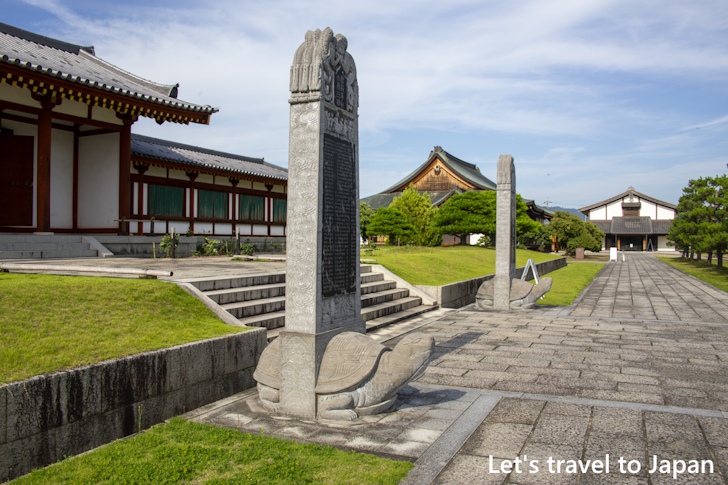
List of photos related to Yakushiji Temple
Please see below for a list of photos related to Yakushiji Temple.
Address and access method of Yakushiji Temple
Address of Yakushiji Temple
The address of Yakushiji Temple is "457 Nishinokyomachi, Nara City, Nara Prefecture".
Access method of Yakushiji Temple
I will explain how to access Yakushiji Temple from Kintetsu Nara Station.
Kintetsu Nara Line
5 minutes
Kintetsu Kashihara Line
4 minutes
Short walk
Attractions near Yakushiji Temple
Several notable attractions are located near Yakushiji Temple:
Toshodaiji Temple
Founded in 759 AD by Chinese priest Ganjin, Toshodaiji Temple is an excellent example of Tang Dynasty architecture. It houses many national treasures, including ancient statues and paintings.
Heijo Palace
This is the archaeological site of the ancient capital of Japan, Nara. The palace was built in 710 AD and served as the center of the Japanese government for more than 70 years. Visitors can explore the reconstructed buildings and learn about the history of the area at the on-site museum.
Nara Park
This beautiful park is home to hundreds of friendly deer, which are considered sacred messengers of the gods. Visitors can enjoy feeding and interacting with the deer in the park. Nara Park also includes attractions such as Todaiji Temple, housing the world's largest bronze Buddha statue, and Kofukuji Temple, known for its five-story pagoda.
Horyuji Temple
One of the oldest temples in Japan, Horyuji is famous for its ancient architecture, numerous cultural treasures, and beautiful pagodas. It is also a UNESCO World Heritage site.
Naramachi
This historic district features narrow streets lined with traditional merchant houses, craft shops, and cafes. It's a great place to experience the traditional atmosphere of Nara, and you can also visit the Naramachi Mechanical Toy Museum to see a collection of traditional Japanese toys.
Other information about Yakushiji Temple
Official site about Yakushiji Temple :
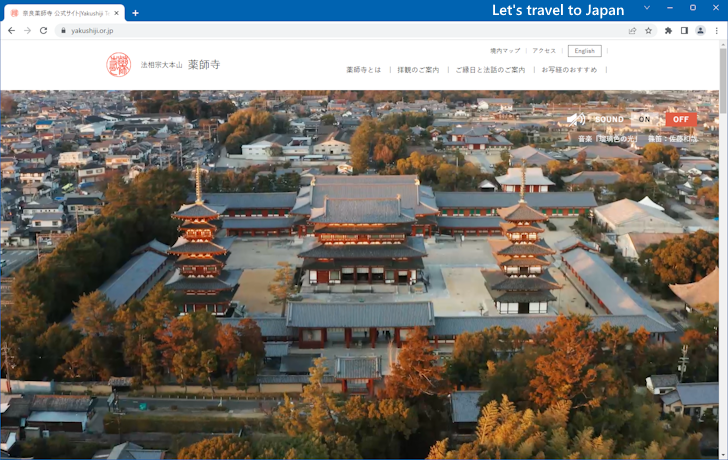
-- --
Thank you for reading to the end.
( Written by Tatsuo Ikura )